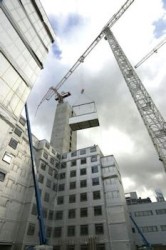Modular Can Reduce Construction Risks
Wood construction has a myriad of benefits, but a very recent and very large construction site fire illustrates the dramatic risks of using wood as a site-built material. The project was large: five-story; 241-unit; and $51 million.
This building was, no doubt, designed to meet all fire and building codes upon completion, but, at 40% completion, the exposed wood framing was a substantial fire risk. This illustrates yet another two reasons to use off-site modular construction. First, using modular dramatically decreases on-site construction time, thereby reducing the construction risk window. Second, with very little change to design and production, the wood frame walls could be shipped already contained within fire rated assemblies.
Thinking about modular MMC construction, add these two items the “Pros” column.
AIA SD – Modular Roundtable Jan 28, 2014
Open discussion January 28, 2014.
This will be an open discussion session covering all things prefab. All AIA members are welcome to join the conversation.
Brown Bag Roundtable: Modular Architecture
Tuesday, January 28, 2014, 12-1:30 pm
AIA SanDiego Chapter Office
233 A Street, Suite 200
San Diego, CA 92101
http://www.aiasandiego.org
Modern Desert Prefab
Guest Speaker: Richard Orne, Architect
AIA San Diego Modular Architecture
Brown Bag Meeting Nov 26, 2013
With a dramatic 10 acre sweeping Borrego Springs desert site, a creative approach and a kit of prefab parts, Richard Orne, Architect designed and built his own modern desert home. An example of the best of Borrego Modern design, the house uses cutting edge systems-based construction technology to build a house that is in tune with its context.
AIA members are welcome to come hear about this impressive implementation of offsite construction from the architect/client’s perspective.
Richard Orne, Architect will share his thoughts and experiences on building with a set of systems based building tools to achieve a custom work of Architecture.
AIA members are welcome to join the meeting. Lunch will be provided by the AIA.
Brown Bag Roundtable: Modular Architecture
Tuesday, November 26, 2013 — 12:00 – 1:30PM
AIA San Diego Chapter Office
233 A Street, Suite 200
San Diego, CA 92101
http://www.aiasandiego.org
Modular and Prefab Library Working Group
AIA San Diego Modular Architecture
Brown Bag Meeting Sept 24, 2013
This will be a working group session to build shared knowledge base resources regarding architecture and prefabrication. Bring information about your favorite books, magazine articles, blog posts and other references to share on the AIA’s KnowledgeNet Modular and Prefabricated Architecture Group website (http://network.aia.org).
We will upload what we can and prepare a bibliography for the rest.
Brown Bag Roundtable: Modular Architecture
Tuesday, Sept 24, 2013 — 12:00 – 1:30PM
AIA San Diego Chapter Office
233 A Street, Suite 200
San Diego, CA 92101
http://www.aiasandiego.org
High Rise Prefab: Current Trends
Presentation and Discussion
AIA San Diego Modular Architecture Group
Brown Bag Meeting May 28, 2013
The next meeting of the AIA SD Modular BBRT will focus on current trends in prefabricated modular high rise architecture. In recent years we have seen 18, 24 and now 32 story buildings being manufactured as modules offsite. James Guthrie, AIA will give a short presentation on recent tall factory-built buildings from the UK and US. After the presentation, the meeting will be open for discussion on related issues. From structural techniques to general aesthetics, AIA members are welcome to come see examples and share their thoughts.
Brown Bag Roundtable: Modular Architecture
Tuesday, May 28, 2013 — 12:00 – 1:30PM
AIA San Diego Chapter Office
233 A Street, Suite 200
San Diego, CA 92101
http://www.aiasandiego.org
PreFab: Lessons from a Local University
AIA San Diego Modular Architecture Group
Brown Bag Meeting March 26, 2013
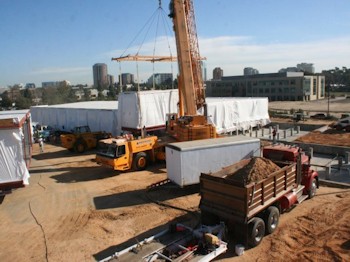 When a San Diego medical group wanted to expand their radiation oncology center, they sought speed and quality. To meet these goals they choose prefabrication.
When a San Diego medical group wanted to expand their radiation oncology center, they sought speed and quality. To meet these goals they choose prefabrication.
AIA members are welcome to come hear about this impressive implementation of offsite construction from the client’s perspective.
Mike Engel, AIA will share his experience on this project. Mike is currently the Healthcare Studio Director at avrpstudios in San Diego. Formerly, he was the project architect for the local medical group during the design and construction of this prefab project.
AIA members are welcome to join the meeting.
Brown Bag Roundtable: Modular Architecture
Tuesday, March 26, 2013 — 12:00 – 1:30PM
AIA San Diego Chapter Office
233 A Street, Suite 200, San Diego, CA 92101
http://www.aiasandiego.org
AIA SD Modular Architecture Brown Bag Meeting: September 25, 2012
Topic: Open Discussion
All AIA members are welcome to join this casual and open discussion of modular and offsite architecture. Come and share your questions and experiences on the current and future state of prefabrication in architecture.
For more information: http://www.aiasandiego.org
All AIA members and allied building professionals are welcome to join these meetings.
Brown Bag Roundtable: Modular Architecture
Tuesday, September 25, 2012 — 12:00 – 1:30PM
AIA SD Offices, 233 A Street, Suite 200, San Diego, CA 92101
Special PreFab Guest and Training at AIA SD Modular Architecture Brown Bag July 24-25
Special Guest: Researcher, Educator and Author Ryan Smith
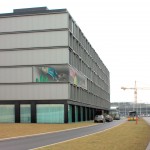
Modular Hotel Netherlands
(c) James B. Guthrie, AIA
Ryan Smith, author of PreFab Architecture (Wiley 2010) and Professor of Architecture at U of Utah, will be attending the July meeting of AIA SD’s Brown Bag Round Table discussion of modular and prefabricated architecture. This meeting will be a casual and open discussion format. Come and share your questions and experiences on the current and future state of prefabrication in architecture. Topics to include the prefabrication process in design and building, lean construction, green building, integrated technologies, global developments and more. For more information: http://www.aiasandiego.org
You are also invited to attend Prof. Smith’s more formal Offsite Design Workshop on Wednesday July 25 at the AGC training facilities in San Diego. This is a half-day morning seminar that will provide more detailed information on prefabrication in architecture and building. AIA members can earn 5 continuing education LUs. For more information: http://www.prefabeducation.com/Prefab_Education/San_Diego.html
All AIA members and allied building professionals are welcome to join these meetings.
Brown Bag Roundtable: Modular Architecture
Tuesday, Tuesday July 24, 2012 — 12:00 – 1:30PM
AIA SD Offices, 233 A Street, Suite 200, San Diego, CA
Offsite Design Workshop (5 AIA LU’s)
Wednesday July 25, 2012 — 8:00 – 12:00PM
AGC Training Facility, 6212 Ferris Square, San Diego, CA
Modular Architecture Q&A: Modular Shapes
Below is the next post, number 6, in the continuing series of prefab/modular Q&A asked by Norman Gray, a graduate student at the New School of Architecture and Design in San Diego, CA and answered by James B. Guthrie, AIA, President of Miletus Group, Inc.
Question:
How can prefab modules be designed so that they are not only rectangular or limited to prefabricated looks like stacked blocks?
Answer:
That is an easy one. Owners and developers who want to build prefab or modular architecture should hire an architect. There is no question that the supply chain in the US has been stuck with boring boxy forms. However, this has more to do with a lack of creative pressure than anything else. While the analogy to Lego® blocks can be fun, there is nothing that requires prefabrication of building components to be as repetitive in form as rectilinear blocks. Blocks do have some efficiencies, but they are minimal. A creative architect who understands how prefab building is done can come up with non-rectilinear forms that can be built as easily as common box forms.
Related link: http://www.newschoolarch.edu
© Miletus Group, Inc. 2012
Zero Net Energy Classroom at Modular Architecture Group
Zero Net Energy Classroom at Modular Architecture Brown Bag Group meeting Jan 31, 2012 in San Diego
The discussion will include American Modular Systems’ CHPS verified and award winning zero net energy Gen7 modular classroom.
January’s guest will be Jim Wallace of AMS. AMS is a California manufacturer of commercial, institutional, and modular buildings.
All AIA members are welcome to join the meeting.
Brown Bag Roundtable: Modular Architecture
Tuesday, January 31, 2012 — 12:00 – 1:30PM
AIA San Diego Chapter Office
© Miletus Group, Inc. 2012
Modular Architecture Q&A: New Materials or Technologies
Below is the next post, number 5, in the continuing series of prefab/modular Q&A asked by Norman Gray, a graduate student at the New School of Architecture and Design in San Diego, CA and answered by James B. Guthrie, AIA, President of Miletus Group, Inc.
Question:
Are there any new materials or technologies which are making prefab construction more cost effective?
Answer:
As far as I am aware, no none that directly pertain to offsite construction.
There are some new building materials on the horizon that show promise, but as of yet they have not made it into prefab production. At this time, the cost benefit of prefab is in the process, not the materials. This could easily change in the near future as the supply chain becomes more robust, but for now the focus has been on tweaking standard methods to make building more cost effective.
Manufacturing processes that allow repetitive work to be done quickly is the chief driver of prefab right now. Quick assembly once on the site is another. Use of sustainable building practices is yet another. Perhaps one aspect of using manufactured processes that is a new benefit to the building world is the idea of greater precision in building. Products produced in a factory setting are inherently built more accurately than on site work. This can translate into stronger and more efficient buildings. The application of the methodology to architecture is somewhat new. The building materials and technologies, however, still tend to parallel standard construction.
Related link: http://www.newschoolarch.edu
© Miletus Group, Inc. 2012
Modular Architecture Q&A: Population vs Construction
Below is the next post, number 4, in the continuing series of prefab/modular Q&A asked by Norman Gray, a graduate student at the New School of Architecture and Design in San Diego, CA and answered by James B. Guthrie, AIA, President of Miletus Group, Inc.
Question:
How do you think increasing populations and decreasing jobs will effect construction and what role will prefab play in this environment? World Populations: 1938 2 Billion, 2006 6.5 Billion, 2030 8.3 Billion.
Answer:
This is an interesting question. I think that if you look at China and India right now you will see two countries that are experiencing a great deal of population growth pressure. In these countries, you can already see some of the answers that occur in these kinds of resource stressing situations. Because of the prefab benefit of speed to occupancy, both China and India are becoming bigger and bigger proponents of prefab construction. They are already implementing these methods at a greater pace than most other countries. They have learned that when the complete supply chain is in place, prefabrication can be used to turn out a great deal of building square footage very fast.
While quick building does move toward ‘solving’ the problem of housing shortages, it is typically being done with generic buildings, not architecture. Unfortunately, just creating housing rapidly means there will be a lack of consideration for how people live and how that housing works within a cultural context. This will naturally lead to significant social problems down the road. This is, though, not a problem caused by prefabrication, but prefab may wind up taking the blame. The problem, at its root, is caused by societies reacting to the past and not planning or designing for the future. This is one reason I am such an advocate for architects becoming more knowledgeable about prefabrication. If architects do not, good design will be ignored for speed. In the end, nothing good will come from that.
Where is the architecture?
– Video of 15 story Chinese hotel built in 6 days:
http://youtu.be/JtdorKaOSQk
– Video of 30 story Chinese hotel built in 15 days:
http://gizmodo.com/5873962/amazing-timelapse-of-30+story-building-made-in-only-360-hours
Related link: http://www.newschoolarch.edu
© Miletus Group, Inc. 2012
Modular Architecture Q&A: Project Size vs Economics
Below is the next post, number 3, in the continuing series of prefab/modular Q&A asked by Norman Gray, a graduate student at the New School of Architecture and Design in San Diego, CA and answered by James B. Guthrie, AIA, President of Miletus Group, Inc.
Question:
Is there a minimum size for a project to make prefab economically viable?
Answer:
No. Prefab is a generic concept that has been used to make buildings as small as garden sheds (1 small module) and as large as a 24 story apartment building (500+ large modules). Viability is determined by all the factors that go into making the building, including understanding the supply chain that produces the factory made components and the efficiencies inherent in that chain.
In the case of the garden shed, the sheds are standard designs produced by the hundreds, if not thousands. In the case of the 24 story building, the resulting building is a single architectural structure. One commonality that lead to the economic success in both examples is the use of repetition where repetition made sense. In the case of the garden shed, repetition is probably obvious as each shed is a copy of a singular design. In the example of the 25 story building, the architect cleverly exploited repetition in the layout of the apartments so that very few unique modules were used yet an overall creative architectural solution was achieved.
The fundamental lesson of economic viability here is that if you want to use prefab for a small building, make many replicas of the same building. If you want to use prefab for a large building, make it from many similar components.
Related link: http://www.newschoolarch.edu
© Miletus Group, Inc. 2011
Modular Architecture Q&A: Transportation Costs
Below is the second post in the continuing series of prefab/modular Q&A asked by Norman Gray, a graduate student at the New School of Architecture and Design in San Diego, CA and answered by James B. Guthrie, AIA, President of Miletus Group, Inc.
Question:
Is transportation of prefab/modular units a significant cost factor?
Answer:
The general answer would be ‘yes’, but how significant is dependent on the details of the project. These details include: the distance and travel conditions between the project and the factory, the size and weight of the prefab components, and the cost of labor at the two locations. To illustrate the extremes, I am aware of projects that were as simple as lightweight bathrooms pods built less than a mile from the project site, to very heavy fully furnished apartment modules that were shipped hundreds of miles, over both seas and roads, and even between two countries. The cost of the transportation was clearly very different being much greater in the second example, yet both projects made financial sense.
To understand the impacts of transportation, keep in mind that costs associated with transportation are not new or exclusive to prefab vs site built. All building construction has transportation costs inherent in the project. Regardless of the method of construction, both materials and labor come from somewhere other than the construction site.
To understand the differences, however, let’s first consider the case of the transportation of labor. In this regard, offsite construction is particularly efficient vs onsite. Workers at a factory tend to live near the factory and so have very consistent and minimal travel distances to the work site (ie the factory). Additionally, carpooling and other energy efficient commuting options become very real in this scheme. In the case of onsite construction, the travel distance for labor is a variable and completely dependent on the location of the trades needed and the building being constructed. Onsite construction requires a more skilled labor force than offsite construction. It is often the case the specialty trades will travel greater distances to reach a construction site than unskilled labor to factories. For onsite construction the location of the worker to the work site is in constant flux with each building built. This is not so with offsite methods.
There is a similar effect with the delivery of materials. Offsite construction occurs on singular factory sites where there tends to be large and protected staging areas. This means materials can be ordered and stored in weather protected areas in bulk far in advance of assembly. Factories also tend to be geographically clustered and located within proximities to construction material suppliers. These two factors greatly increase the efficiency of material delivery to the point of assembly.
For prefab, there is then unique cost of transporting large assemblies to the building site. Unlike traditional onsite labor and material logistics, however, prefab assemblies carry with them substantial embodied bulk material and embodied bulk labor, and are thus extremely efficient transportation hauls.
Because of these efficiencies and the addition of labor to the total transportation cost of building, the equation of transportation related costs and its percentage of the total building cost, has many components and modifiers to consider in the final equation. This is why, depending on the project, it can actually be cost effective to ship large and heavy modules long distances.
Related link: http://www.newschoolarch.edu
© Miletus Group, Inc. 2011
Tweaking Modern Architecture
FROM BAUHAUS TO BORREGO
James B. Guthrie, AIA
Sometimes we might have to read a poem a couple of times before we start to understand the nuance in what the poet is trying to convey. This is also true of architecture. It is true of the desert.
Borrego Springs, California is a place of poetic realization. It is a place that brings a post-war vision of modern living to a dramatic desert landscape. It is a gem worthy of notice. Borrego Springs is becoming known as a great place for mid-century modern architecture. It too deserves multiple readings. The mid-century modern architecture in Borrego Springs is quite good, but one of the more fascinating architectural aspects of its modernism is its contextual and temporal influence on more common modern architecture’s precepts.
MODERNISM’S BASICS
One of the basic tenets of modernism is the idea of form following and expressing function. The first European modernists, for example, sought inspiration from other structures that were purpose built, structures like factories and steam ships. In their design pursuits they sought purity of form, removal of non-functional ornament, and the visual and engineering exploitation of modern materials of construction. The formal results of the modernists coming from Europe and the Bauhaus in Germany was a very clean, mostly rectilinear vocabulary. In the hands of masters like Mies van der Rohe, exquisite and poetic works of architecture emerged from modernism’s foundations. One of the iconic designs to come at the peak of this era of modernism is the Farnsworth House by Mies (Figure 1).
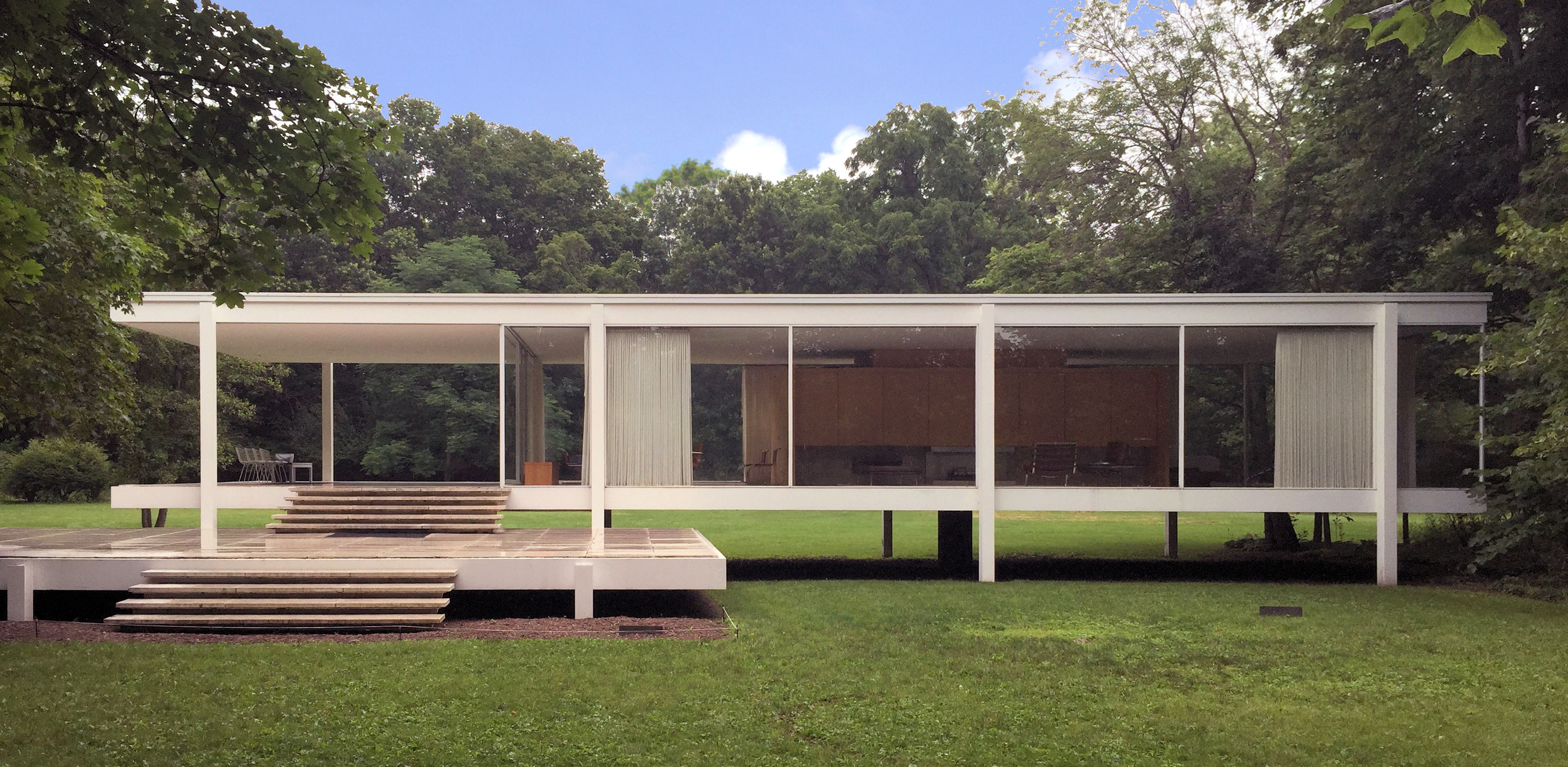
Figure 1: Farnsworth House, Plano, IL (near Chicago)
Architect: Mies van der Rohe, c. 1946
Source: Author
POST-WAR SHIFTS
By the end of WWII, the center of the European modern movement had shifted. Mies had left the Germany and landed in Chicago. It was a logical choice as Chicago had already established itself as the center of new American architecture with Sullivan, Wright and others of the Chicago School. Along with the apprentices working in Chicago’s architectural studios, Mies began teaching his brand of modernism to a new generation of modernists at the Illinois Institute of Technology. Modernism thrived there, carrying on and refining the idea of form’s relationship to function.
But something else was happening at the same time. A number of architects having worked in the Midwest wound up moving to Southern California. Irving Gill was one of the first to open that door and bring modernism and Chicago’s architectural thinking to California. His work was brilliant and on the cutting edge, but he was early and wound up working in relative isolation. Rudolph Schindler and Richard Neutra would soon follow Gill, but they were still a small group. That all changed with WWII. Just before and during WWII, California became a big part of the defense buildup and major new industries were being established there. To support this new industrial wave, European and American design talent began moving west in significant numbers.
After WWII, Southern California found itself caught in a major economic and cultural wave. There were many creative minds at work during this period. This is the time of the now famous Case Study Houses project by Arts & Architecture magazine. The Case Study project was all about taking the ideas of modern architecture and adopting them to a new emerging modern California lifestyle. Where the Farnsworth House was a tight and precise machine raised above and apart from the landscape, the California movement, as exemplified by Case Study Houses, were rooted in the ground and anchored to the pleasant Mediterranean climate of coastal Southern California. Case Study House #22 (Figure 2) is a good example of how the line between inside and outside had disappeared. Nature now flowed into and through these homes, though formally they still strongly resembled their European precedents.
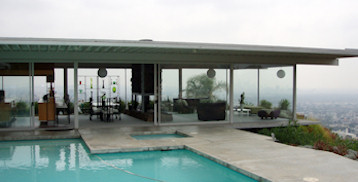
Figure 2: Stahl House, Case Study House #22, Los Angeles, CA
Architect: Pierre Koenig, c.1960
Source: Wikipedia.org
The idea of integrating nature into architecture had long been talked about by architects of the modern age, and some, like Gill and Aalto, had success with the idea. Post WWII California, however, brought modernism into a symbiotic relationship with the earth. The floor was the ground; the ground was the floor.
DESERT TWEAKING – DESERT MODERN
The desert is an interesting place. It is extreme in its climate and subtle in its beauty. It is a place that never lets you forget where you are. It never lets you separate yourself from it. It demands your attention. When you understand its energy, and you give in to it, you come to know the power and beauty of all of nature. The desert is poetic, and it has a powerful draw to a special kind of person.
Borrego Springs sits in the middle of the Anza Borrego Desert (Figures 3 & 4). It was the perfect place for the ideas being developed in Los Angeles and San Diego to take on a new dimension. The timing was also right. This community was just being built in the 1950’s and 1960’s. Unlike the first modernists, though, factories and ships were no longer adequate formal inspirations. The sun and climate of the desert demanded a rethink, a tweak.
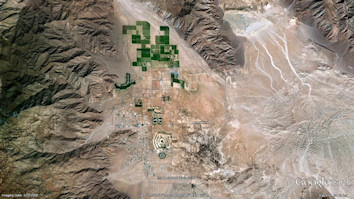
Figure 3: Borrego Springs and Anza Borrego Desert, CA
Source: Google Earth
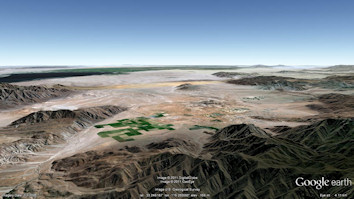
Figure 4: Borrego Springs and Anza Borrego Desert, CA
Source: Google Earth
The modern ideas that emerged in this desert brought together the notions of being rooted to the earth, soaring through it’s warm air, and finding comfort and shelter from its searing heat and sun. These ideas all emerged from one Richard Zerbe. An unlikely hero, Zerbe came to Borrego Springs through an apparently random series of events. As it turned out, he was the right person, in the right place, at the right time to create an architecture that is special to its time and place.
Zerbe, who first studied aeronautical engineering in Pittsburg, found his way to San Diego as a young man. He wound up working in the new aerospace industry, which was then booming in Southern California. A few years later, he changed careers to become an architect. He moved to east San Diego County near the Anza Borrego desert, and wound up creating a special contextual and spiritual modernist style in the process.
As with earlier modernists, Zerbe kept to a tightly engineered design, with a form follows function approach. He also kept the openness, pushing the idea of enclosure to the background. From the Southern California modern variant, he placed his buildings on the desert floor, allowing the inside and outside to be one. What Zerbe did with his roof design, though, is what really sets him and his buildings apart and creates a new Borrego Springs architectural zeitgeist.
Because the desert sun is so strong, Zerbe pushed the roof edges way out beyond the wall line to create ample shade below. With this strong roof and the modernist transparency below, he then tilted the roof slightly. Unlike the low pitch of a Prairie style hip roof, Zerbe created massive roof planes that hover above his buildings (Figure 5 & 6). They take on the characteristics of a large airplane wing. He exploited that notion by detailing the roof structure like the aeronautical engineer he was. The struts and outrigger framing were exposed and tapered to enhance the aeronautical metaphor (Figures 6 & 7). Vertical members were diminished to reduce their obstructions to the floating horizontal lines (Figures 8 & 9). Like Wright who saw and emulated the horizontal lines of the prairie, Zerbe saw the horizontal shape of the wind and of flight and emulated them. The desert breezes flow over and under his roofs, like the wings of a soaring airplane. They also provide the very functional role of shading and of cooling the people under those wings. Zerbe created the Desert Modern style.

Figure 5: Cosgrove House, Borrego Springs, CA
Architect: Richard Zerbe, c. 1957
Source: www.BorregoModern.com/Zerbe Architectural Archive

Figure 6: Fairway Cottage #11, Borrego Springs, CA
Architect: Richard Zerbe, c. 1957
Source: © Judy Parker 2010 (http://www.judyparker.com)
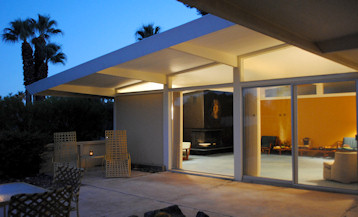
Figure 7: Fairway Cottage #11, Borrego Springs, CA
Architect: Richard Zerbe, c. 1957
Source: © Todd Pitman 2010
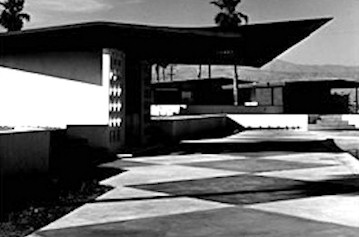
Figure 8: Common Area Units 9-12, Borrego Springs, CA
Architect: Richard Zerbe, c. 1957
Source: www.BorregoModern.com/Zerbe Architectural Archive
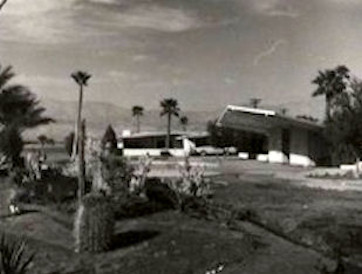
Figure 9: Common Area Units 1-4, Borrego Springs, CA
Architect: Richard Zerbe, c. 1957
Source: www.BorregoModern.com/Zerbe Architectural Archive
Richard Zerbe’s work in Borrego Springs is unique and shows us how context and time can be used to create architectural form. Zerbe was a nuanced architectural poet, and his work deserves multiple readings.
To be sure, this blog post only presents a very thin slice of Borrego Springs and the many modern architectural delights to be found there. This post is intended to highlight some of the special architecture and its contextual modernism that really stands out. Borrego Springs and its surrounding desert have a lot more to offer than just Zerbe’s work. If you have an appreciation for mid-century modernism, modern modernism and/or the desert, Borrego Springs is well worth a visit.
For the details of Zerbe, his work and all things Borrego, I would especially like to thank Bill Lawrence. His research and enthusiasm for Borrego Springs architecture and its history is contagious and unequaled. My knowledge of the place would be strictly experiential if it were not for his work. The details of Zerbe’s life and work, as well as the historical photos of Borrego Springs included here are the result of his diligent research. To learn a lot more about this interesting community and its architecture visit Bill’s extensive website: http://www.borregomodern.com
For information about the Anza-Borrego Desert State Park that surrounds Borrego Springs and continues to inspire its architecture, visit: http://www.parks.ca.gov/?page_id=638
© Miletus Group, Inc. 2011, 2018
Modular Architecture Q&A: Time and Money
James B. Guthrie, AIA, the President of Miletus Group, Inc, was recently approached by Norman Gray, a graduate student at the New School of Architecture and Design in San Diego, CA regarding an architectural project he was working on. As a part of his research, Mr. Gray sought our expertise in answering several questions regarding prefab and modular construction. We thought the questions were very good ones and worth sharing with a wider audience. We will post each question and answer as a separate blog post. Readers who have their own questions about modular architecture are encouraged to ask us as well.
Question:
What percentage of time and money do you think prefab can save a project?
Answer:
When it comes to prefab, generalized questions can be difficult to answer. In general, on a direct apples-to-apples comparison, I would say that you could expect that a prefab project can be 0-15% less per square foot than a traditionally built project of the same design and specifications. There are too many variables, though, to allow a hard and fast rule as to discounts.
It is also important to keep in mind that when we are talking about prefab, we can be talking about prefab architecture or prefab building. When I talk about prefab architecture, I am using the idea that architecture is a high quality building designed by a professional and it is always site specific. This means that each prefab architecture project will be unique to the site it is being placed on. The quality of the end result will be high quality, and the owner will be a ‘client’ of a professional architect. Prefab building, in contrast, is a generic ‘product’ that can be non-site specific. The quality can vary dramatically from project to project and the owner of this product is a customer of a building company.
The other important thing to consider is the definition of “project”. Architects tend to think of a project as the specific building they are working on. Building owners, however, think of a “project” as the entire business model related to that building. This includes the architecture plus: land acquisition and development, operations and maintenance, financing, cash flow and other business considerations. To answer the question about prefab architecture from the architect’s side, at this time a prefab architecture project has no inherent time or money advantages to the architect except as it may add value for their clients. To answer the question from the owner’s perspective regarding prefab architecture, it can have significant time savings, which to the owner can translate into a huge financial savings to the non-architectural aspects of the project. The amount of savings is, of course, dependent on the project.
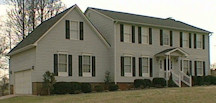 Typical Modular Home, USA
Typical Modular Home, USA
2 Offsite Stories, 1 Single Family House, 4 Modules
On the small scale, in the US right now it is very easy for a homebuyer to buy a house much like they buy a car. The homebuyer can go to a sales lot of a manufactured home builder, tour model homes, pick out their model, pick out colors and finishes, and have their new home delivered in a very short amount of time. These homebuyers are buying a prefab building, not prefab architecture. The opportunity for this kind of building to become architecture is very limited. Because prefabrication is a method of construction that takes advantage of manufacturing processes, the economic side of prefab is most successful when there is volume on the production side. One single family home does not afford current manufacturing processes the kind of efficiencies needed to be cost effective. In the case of a home or small commercial building, volume is achieved when many of the same design are produced. In this situation, the efficiency is dispersed among many buyers. This means, naturally, that each individual buyer looses the opportunity to influence the design and quality of their purchase.
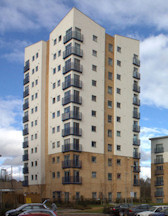 Modular Housing, England
Modular Housing, England
10 Offsite Stories, 162 Apartments, 630 Modules
On the large scale, the prefab building buyer is also buying the convenience of speed to occupancy, but the larger scale can allow the project to be more architectural. Fundamentally the building process is relatively the same between prefab and onsite construction, except that the offsite components can be built simultaneously with much of the onsite work. The onsite assembly of the offsite components can then occur very rapidly. On a large project this can save a lot of time, and thus a lot of money to the owner. This is important, as even if the square footage costs of onsite and offsite construction are nearly identical, the cost savings to the owner can be very significant and far exceed the 0-15% savings in square footage costs. Unlike a single family home, the size of a large project can allow the design to take on far more significant role than is possible in small projects. It is the large projects that create the greatest opportunity for all the benefits of prefabrication and the application of real architecture to meld. This is the future of prefabrication in architecture.
Related link: http://www.newschoolarch.edu
© Miletus Group, Inc. 2011
Modern Construction Lexicon – Update
Acronyms are terms made up of the initial components of words within a phrase. Eventually, acronyms become words themselves through popular use. For instance, LEED® stands for “Leadership in Energy and Environmental Design,” however most design trade professionals understand that it is an internationally recognized green building certification system developed by the U.S. Green Building Council or (USGBC). This week we have added two new acronyms, LEED and BIM, to our lexicon. The two terms are frequently referenced in Modern Methods of Construction or (MMC).
Link below to view the glossary page, which will be updated frequently with new words. We would also like to invite you to suggest new terms or expressions you would like to see added to our lexicon by typing within our comment area.
LEED® (Leadership in Energy and Environmental Design)
LEED is an internationally recognized green building certification system. It provides third-party substantiation that a building or community was designed and built to be sustainable by establishing metrics for energy savings, water efficiency, CO2 emissions reduction, improved indoor environmental quality, and stewardship of resources and sensitivity to their impacts. Founded by the U.S. Green Building Council (USGBC), LEED is an open process that is publicly reviewed and provides a framework for identifying and implementing measurable and practical green building solutions.
Miletus Group is a member of USGBC and endorses the LEED program as a powerful tool to bringing the built environment to higher levels of sustainability.
BIM (Building Information Model/Modeling)
The National Building Information Model Standard Project Committee defines BIM as: a digital representation of physical and functional characteristics of a facility. A BIM is a shared knowledge resource for information about a facility forming a reliable basis for decisions during its lifecycle: defined as existing from earliest conception to demolition. According to Building Design + Construction magazine, more than 100 top design firms identify revenue from BIM projects and in the top 10, BIM is used in 58-85% of projects. Practically, BIM is about information management, which is shared by all project participants, using technology to advance creativity, productivity, and team empowerment.
Miletus Group utilizes BIM in its workflow and believes it is a superior way to bring greater design, documentation and construction efficiencies to the architectural and modular building process.
Renovated Reuse (in modular buildings)
Renovated Reuse can be defined as a reconfiguration of an existing modular building or modular building component to meet the needs of a new configuration, use or location. Renovated Reuse can be applied to all modular buildings whether temporary or permanent. Renovated Reuse is a very green process in that whole buildings and large building components can be diverted from the landfill. In the case of reuse of modular buildings and modular components, the green process is still further enhanced, as direct reuse requires far less embodied energy than recycling. Because of their component nature, modular building components can be designed in advance, as a part of their life cycle, to be deconstructed and reconstructed so that Renovated Reuse is a strategic part of a new building’s business model.
In 2009 a Miletus Group renovated reuse modular project won an MBI Award of Distinction for its design conversion of a modular office building to a sustainable modular climate controlled warehouse.
Net-Zero Energy
Net-Zero describes buildings with zero net energy consumption from non-renewable resources and zero carbon emissions annually. Zero energy buildings do not need to be reliant on a traditional energy grid supply. Energy can be harvested using Solar, Wind or Geothermal technologies while also reducing the overall energy consumption. The zero-energy design principle is becoming more practical to adopt due the rising costs and negative impact of fossil fuels as well as the advent of efficient alternative energy sources. There is some debate in the design community as to whether or not renewable energy sources must occur on site to be considered true net zero. At Miletus Group we believe that it is more efficient to have the energy source as near to the point of use as possible, but it is not always the case that the best solution has the energy source on site. The location of renewable energy sources should be made on a case-by-case basis.
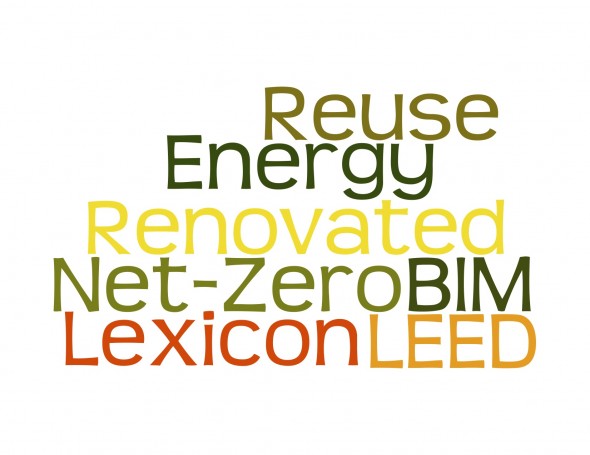
© Miletus Group, Inc. 2011
Architectural Blogs of Note – Update
We return to our feature, “Architectural Blogs of Note.” If you have an architectural blog you feel is noteworthy – please feel free to share the link by adding it to the comments area below. These blogs are selected for their quality and contribution to the online architectural knowledge base. As architects and bloggers we have a responsibility to continuously evolve our profession through smart and vibrant discussions, education, and involvement. We hope you enjoy our blog selections.
A456
http://www.aggregat456.com/search/label/architecture
A456 offers postings about architecture and design-based ideas across a variety of disciplines. Author Enrique Ramirez is a PhD candidate at the Princeton University School of Architecture, and is a 2007 graduate of the Master of Environmental Design program at the Yale School of Architecture.
Urban Planning Blog
http://urbanplanningblog.com
Pratik Mhatre (Ph.D. in Urban and Regional Science, Masters Degree in Public Policy and an undergraduate degree in Architecture) provides his thoughts on urban planning and design. He is deeply interested in the relationship of public policy and the built environment; especially the intersection of public health policies and their impact on socio-economic characteristics of the neighborhood/community.
DigitalUrban.org
http://www.digitalurban.org
Dr Andrew Hudson-Smith, author of the Digital Urban Blog with 5200 daily readers, has been at the forefront of developing digital geographical technologies that support design professionals working in the built environment. He is the Director and Deputy Chair of CASA, Editor-in-Chief of Future Internet Journal, an elected Fellow of the Royal Society of Arts and Course Founder and Director of the MRes in Advanced Spatial Analysis and Visualization at University College London.
Modern Construction Lexicon
Words are powerful conveyors of information – but only if we are all on the same page as far as what the words we use actually mean. And words can change in their meaning over time. Look at the phrase “pre-fab” for example. Pre-fab comes from prefabricated. This word can be applied to just about everything made these days (except most buildings). In the context of buildings it has roots in home building, as in “Prefabricated Homes.” This phrase was first used a few decades ago and commonly referred to mobile homes. To many people this reference invokes connotations of cookie cutter shapes and cheap construction methods. More recently “prefabricated” has been shortened to “pre-fab” and its meaning also has shifted to be applied to a new breed of house that is cleverly designed, manufactured, sustainable, of modern style, and of high quality. We hope our new glossary helps to clarify the meaning of words that are defining Modern Methods of Construction today.
Link below to see the new glossary page! We will update this frequently with new words. Please feel free to add new words you would like to see in the glossary in our comment area.
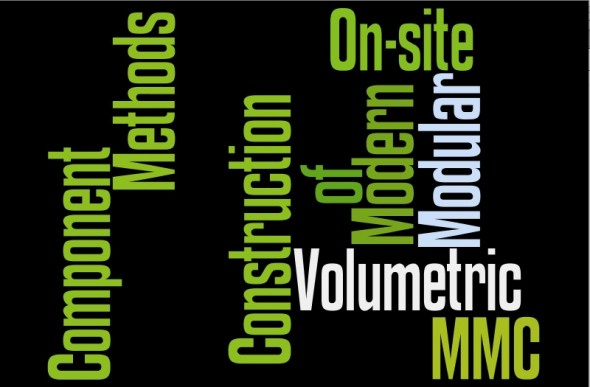
© Miletus Group, Inc. 2011
McGraw Hill: Prefabrication and Modularization
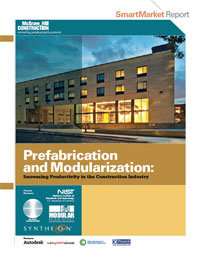
McGraw Hill Construction’s recent publication of “Prefabrication and Modularization: Increasing Productivity in the Construction Industry” provides a deep look into current thinking and trends surrounding off-site construction in the US. Overall, the report is very good and worth taking the time to read and ponder the implications of its contents.
While it is a bit disappointing that McGraw Hill did not tackle the important but less tangible aspects of architecture and design, the contents do provide the reader with a broad understanding of the benefits of this method of construction. Architects who read it won’t walk away with an immediate or complete tool set for how to design buildings for off-site construction, but, and this is also important, they will have a few more heavy duty tools for talking to their clients about it as an option for their upcoming architectural projects. According to the report, the number one reason that off-site is not used on more building projects is because “the architect did not design it into the project.”
Why should architects care? The report does a very good job of answering this question. According to McGraw Hill’s research, prefabrication and modularization offers the building process many improvements in a number of key fronts. These include:
- Improved Project Schedules
- Reduced Cost and Budgets
- Site Safety
- Green Building and Waste Reduction
The report goes into great detail about its findings in these areas. If you want some tools to learn about and be able to talk to the issues of increasing construction productivity, we invite you to read the report for yourself.
– – –
The Modular Building Institute Educational Foundation is offering a limited number of full color printed editions this report in exchange for a $100 or more tax-deductible donation to the Foundation. You can contact us through the comment area if you would like to make a donation and receive a copy/copies of the report.
© Miletus Group, Inc. 2011
McGraw Hill: Increasing Productivity in the Construction Industry
 McGraw Hill Construction recently published a document called: “Prefabrication and Modularization: Increasing Productivity in the Construction Industry.”* This is the latest in their Smart Market Reports, a series they publish on construction industry trends.
McGraw Hill Construction recently published a document called: “Prefabrication and Modularization: Increasing Productivity in the Construction Industry.”* This is the latest in their Smart Market Reports, a series they publish on construction industry trends.
A lot of research went into the report and it contains many interesting sub-topics. However, it only takes a quick look at the cover to find the first item of note. The report’s sub-title is: “Increasing Productivity in the Construction Industry.”
Most people who work in the construction industry are keenly aware that traditional site-built methods of construction have a bad reputation when it comes to efficiency. Likewise, most building owners and developers are keenly aware that those efficiencies hit the pocket book hard as they manifest themselves as poor quality work, change orders and completion delays. That McGraw Hill chose to include off-site construction in the general discussion of how we build all buildings is a huge step in the right direction of understanding that there is a better option in the way we create and assemble buildings.
This is a significant notion. Most non-industry discussions about prefabrication tend to see it as an anomaly, a mere curiosity for small scale players. They relinquish ‘prefab’ to the sidelines of the greater discussion of how we build all buildings, big and small. Those of us who currently practice in the off-site industry understand how efficient this method of construction really is and generally have a large vision of how important a role it can play in curing the productivity woes found with on-site construction. That McGraw Hill decided to take this on with an in depth analysis is in itself worthy of mention.
* While primarily researched and published by McGraw Hill, this Smart Market report included a number of partners. One partner was the Modular Building Institute Educational Foundation, of which James B. Guthrie, AIA, President of Miletus Group, is the Chair.
– – –
The Modular Building Institute Educational Foundation is offering a limited number of full color printed editions this report in exchange for a $100 or more tax-deductible donation to the Foundation. You can contact us through the comment area if you would like to make a donation and receive a copy/copies of the report.
© Miletus Group, Inc. 2011
Modular Architecture Brown-Bag Roundtable
AIA Meeting August 2, 2011 in San Diego
Find out more about the latest methods in modern, modular construction. It’s not just theory; it’s winning prestigious design awards for architects interested in sustainable building, cost efficiency and quality control.
Come to the next meeting of the Modular Architecture Brown Bag group to hear Eric Naslund, FAIA of Studio E Architects discuss his project: High Tech High. Eric will be sharing his experiences using modular construction in his COTE award-winning design.
Modular Brown-Bag Roundtable
August 2, 2011
12:00 pm – 1:30 pm
AIA San Diego
233 A Street, #200
San Diego, CA 92101
Phone: (619) 232-0109
Email: info@aiasandiego.org
Increasing interest and the recent growth in the US and abroad of new construction substantial modular buildings, and the industries surrounding it, signifies a significant change on the architectural landscape. At the National AIA level, on the new AIAKnowledgeNet, The Modular and Prefabricated Architecture Group has been established to provide a central location where architects and allied professionals can share, learn and promote state-of-the-art offsite construction to new architectural levels.
AIA San Diego invites you to join your peers who share your interest in this topic at a local Brown-Bag Roundtable. No RSVP is necessary. This is a free, member-only, bring-your-own-brown-bag event. Food vendors are available in the building for those wishing to purchase their lunch.
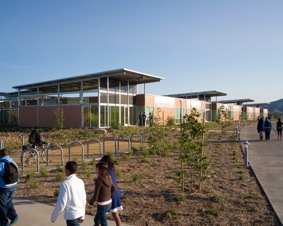
High Tech High
Jim Brady Architectural Photography
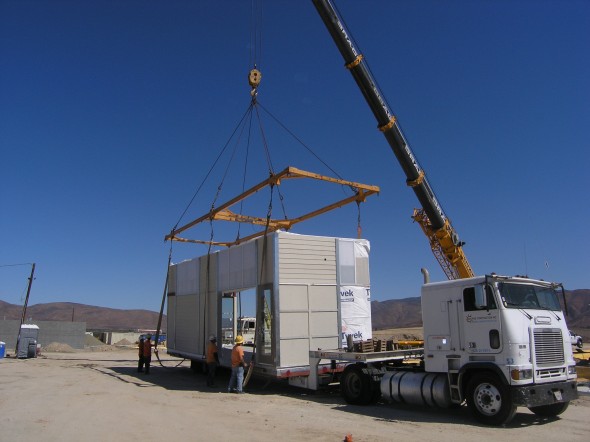
High Tech High Modules
© Miletus Group, Inc. 2011
Finland: Tekla, Peikko and Integrated Building Teams
Finland building professionals are on the leading edge in advancing integrated building processes and teams.
The Finnish software company Tekla is pushing the limits on their BIM (building information modeling) software. Tekla’s software was originally intended for engineers so that they could improve their structural analysis, but as it developed it became a full-fledged BIM. Today contractors are also using it with the objective of planning and implementing efficient building processes. In Finland, though, they have taken yet another big step in bringing BIM into the complete integrated building process, which now includes the building materials supply chain.
James Guthrie, President of Miletus Group, Inc., was recently invited to Finland by BuildOffSite (UK) and Tekla to attend a series of seminars and field trips focusing on BIM and offsite construction there. The seminars were designed to show the state of the art in moving from BIM to BIM + Management (BIMM) and BIMM + Production (BIMMP). Tekla has been working closely with some of Finland’s principle engineers, contractors and the building material suppliers to advance greater accuracy and quality in construction through integrated approaches in design, engineering, building product development, on site construction and, soon to come, subsequent facility management.
Neither Tekla’s software nor the Finnish building teams have reached that full ideal yet, but the advances witnessed are impressive and very hopeful. The days of full implementation are not very far away.
Many architects and contractors are becoming familiar with the usefulness of BIM for providing sophisticated pre-building design and analysis, which leads to a more efficient and error free construction process. That, however, is just the beginning of where modern methods of construction are going.
During the seminars and tours, Finnish building teams demonstrated how they are integrating the total building process. Of particular note was the principle structural supplier Peikko. Peikko is supplying all of the vertical and horizontal structural components of a new 300,000 square foot shopping center now being built in Lahti, Finland.
Piekko has developed a clever integrated (steel & concrete) construction system that allows for a high degree of consistency in cross section sizing, and thus simple design consideration for length with a wide variant in strength capacity. Working with Tekla, they have also developed modeling components for the BIM environment. This means that they have essentially developed a building structural system that is virtually and actually prefabricated and componentized. This system ties the entire building process together, from first design idea through to construction. Using their system, the Tekla BIM model is easy to apply, production and construction are fast and accurate, and the end result quality is very high.
The progress being made in Finland is the promise of future efficiencies in modular and other prefabricated building systems. When a designer has flexible building systems built into their processes, and can be assured that the final building outcome will be as designed and of a high quality, prefabrication will truly become a critical part of the architectural tool kit. After generations of inefficient site built methods, this new comprehensive offsite thinking and full team integration is huge.
Related links:
BuildOffSite: www.buildoffsite.com
Tekla: www.tekla.com
Peikko: www.peikko.com
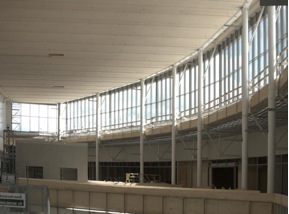
Lahti Shopping Center Under Construction
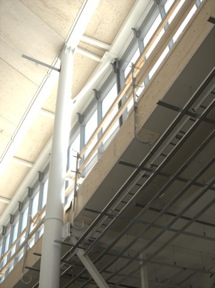
Peikko Detail
© Miletus Group, Inc. 2011
Green Building – The Role of Creativity – Self Regulation vs. Universal Codes
 Prefabrication and modern methods of construction (MMC) offer tremendous opportunity for creating better architecture and more sustainable environments.
Prefabrication and modern methods of construction (MMC) offer tremendous opportunity for creating better architecture and more sustainable environments.
Because MMC is a relatively new method of construction, many people in the building world still do not have a good understanding of what MMC is and what it brings to the table in the way of sustainable building opportunities. They are many, but a lack of knowledge could stifle this method as a solution to advancing green building.
LEED drives green creativity in U.S.
By now most people have heard about the U.S. Green Building Council (USGBC) and their LEED rating system. In just over ten years the USGBC went from non-existence to being “The” standard for green building in the U.S. The USGBC has done a lot of things right in their short life, but one reason their LEED ranking system is so popular is because it acknowledges, allows and even encourages creativity and flexibility, by the architects and the building team, to create a green building. The USGBC approach deserves a lot of credit for making green building something the marketplace is now demanding, and thus the market is now driving further aggressiveness and creativity in the building market here in the U.S.
Do government regulations stifle creativity?
Architects and builders in Europe are actually jealous of our success in this area. But why? When someone from the U.S. looks from afar at what some of the European countries are doing, we might see them as being more successful at green building than the U.S. What they have done (differently) is to mandate green building through government regulation. Some countries have gone so far as to mandate “zero carbon footprints” and “net zero energy” for buildings within 15 years. These are great concepts to be sure, but so far there is no agreement on what these terms actually mean and so they will be very difficult to regulate. Are they regulating creativity or stifling it?
As of yet, the U.S. has not taken the regulatory approach, yet the free market keeps pushing us in a greener and greener direction – again thanks to the USGBC model. However, some fear that the market may never fully embrace these ideas beyond certain niche buildings, or that the building market will at some point slow down and forget about sustainability, falling back to its old ways of being an energy hog.
Regulation can be good and bad. Generally, when a market is regulated, as in the implementation of building codes, it tends to get micro-managed by government, and creativity gets stifled.
Could IgCC wind up hurting creativity in U.S.?
Currently the International Code Council (ICC), a US based independent code authoring organization, is in the process of finalizing their first International Green Construction Code for the US. Like the European model, the IgCC is an attempt at creating a codified legal structure to mandate green building. This will absolutely create a massive process and bureaucracy to implement. It is very likely going to have the negative effect of stifling creative green building solutions.
If the IgCC follows the standard building code model, the building construction process will likely shift from trying to be as green as one can be, to being as code compliant as one needs to be to get a permit. If one has a new idea, yet it does not fit within the regulatory framework of the code, it becomes incredibly difficult to implement. Many hurdles will be thrown up by the code and permit process, such as: bureaucratic red tape, lawyers, excessive testing, layers and layers of review and finally delays waiting for inclusion in a future versions of the code to include new language.
The IgCC is not done being written yet, but it is getting very close.
Because the Miletus Group and others are pushing the envelope on new building methods, without some accommodation for creative innovation, such as consideration for the benefits of off-site construction, the IgCC could have a the opposite effect of its stated purpose. We would, therefore, advocate for an IgCC implementation process that not only allows for creative solutions but also, as in the USGBC model, encourages it!
© Miletus Group, Inc. 2011

